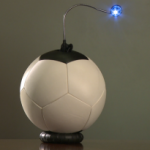Texas Researchers Hijack Drone

One thousand dollars seems like a nominal amount but it was enough for a team of researchers at the University of Texas to bring down a flying drone.
Under the leadership of Professor Todd Humphreys, students from the University of Texas at Austin Radionavigation Laboratory accepted the challenge from the U.S. Department of Homeland Security to hijack a flying drone, and the team finally managed to do it.
They have proved, among other things, that it is not difficult to hack a drone.
The researchers used a technique called ‘spoofing’ which enables them to take control of a small but high-tech drone in midair. The hackers successfully imitated the signals that were sent to the drone’s on-board GPS. This hostile takeover of the drone was done by using a device to hack its GPS system.
The test took place at the University of Texas stadium where small red drones flew into the air with a clear set of commands entered into its system.
Within a few minutes of the take off, the drone abruptly veered to the side, making it quite clear that it was not obeying its original orders anymore. Finally, the aircraft appeared as if it is falling towards the ground because of a a self-destruct command but it was stopped at the last minute.
Humphreys said that by using just $1000, his team successfully built a highly advanced spoofing system yet which tricked the aircraft into following a new set of commands.
‘Spoofing a GPS receiver on a UAV is just another way of hijacking a plane,’ Humphreys said.
Some sources claim that the same technique was used by Iran when it was successful in bringing down a largely undamaged drone last year.
The U.S. military is increasingly using these unmanned aerial vehicles, also called drones, in their counter-terrorism operations. The United States has deployed drones in different countries like Afghanistan, Pakistan, Yemen and Iraq in order to fight effectively in thorny and difficult areas.







